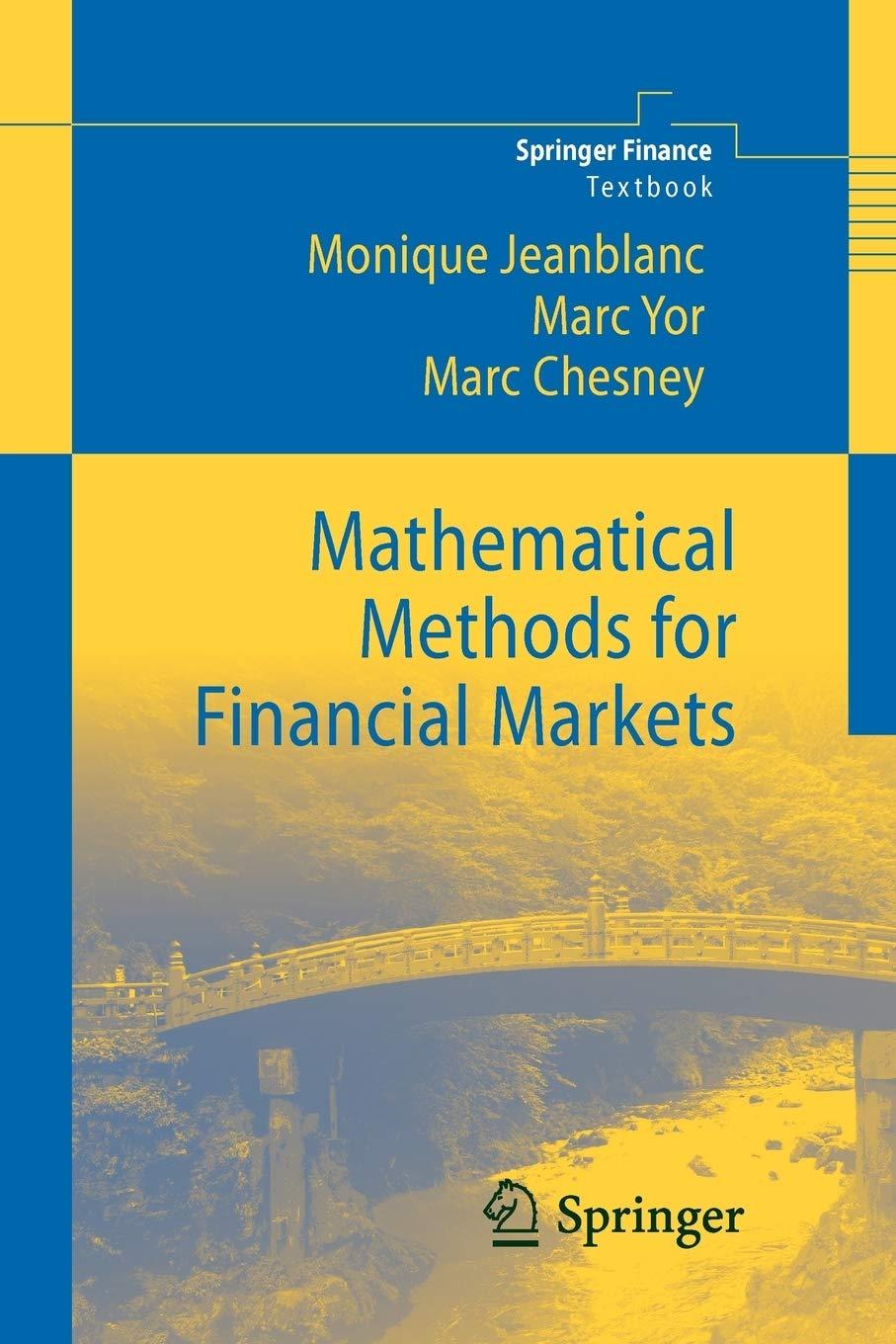Let (B) and (W) be two independent Brownian motions, (a) and (b) two strictly positive numbers with
Question:
Let \(B\) and \(W\) be two independent Brownian motions, \(a\) and \(b\) two strictly positive numbers with \(a eq b\) and \(Y_{t}=a B_{t}^{2}+b W_{t}^{2}\). Prove that \(\sigma\left(Y_{s}, s \leq t\right)=\sigma\left(B_{s}^{2}, W_{s}^{2}, s \leq t\right)\).
Generalize this result to the case \(Y_{t}=\sum_{i=1}^{n} a_{i}\left(B_{t}^{i}\right)^{2}\) where \(a_{i}>0\) and \(a_{i} eq a_{j}\) for \(i eq j\). Prove that the filtration of \(Y\) is that of an \(n\)-dimensional Brownian motion.
Example 5.8.2.3 Example of a martingale with respect to two different probabilities:
Let \(B=\left(B_{1}, B_{2}\right)\) be a two-dimensional \(\mathrm{BM}\), and \(R_{t}^{2}=B_{1}^{2}(t)+B_{2}^{2}(t)\). The process \[L_{t}=\exp \left(\int_{0}^{t}\left(B_{1}(s) d B_{1}(s)+B_{2}(s) d B_{2}(s)\right)-\frac{1}{2} \int_{0}^{t} R_{s}^{2} d s\right)\]
is a martingale. Let \(\left.\mathbb{Q}\right|_{\mathcal{F}_{t}}=\left.L_{t} \mathbb{P}\right|_{\mathcal{F}_{t}}\). The process \[X_{t}=\int_{0}^{t}\left(B_{2}(s) d B_{1}(s)-B_{1}(s) d B_{2}(s)\right)\]
is a \(\mathbb{P}(\) and a \(\mathbb{Q})\) martingale. The process \(R^{2}\) is a BESQ under \(\mathbb{P}\) and a CIR under \(\mathbb{Q}\).
Step by Step Answer:

Mathematical Methods For Financial Markets
ISBN: 9781447125242
1st Edition
Authors: Monique Jeanblanc, Marc Yor, Marc Chesney





